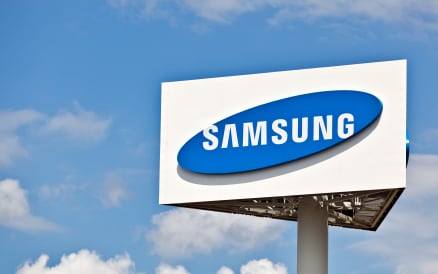

One of the tenets of crisis communications is that no matter how well you manage your first crisis, past misdeeds often find their way back into the media mix during whatever subsequent crisis (or even minor headache) befalls you.
As a reporter, I mentioned past crises because I thought they added context to my stories. In addition, journalists and investors love looking at prior missteps. They offer clues as to whether the current problem is an unfortunate mistake or part of a larger pattern that often indicates an issue with your culture. (Cue references to Wells Fargo.)
Take the recent case of Samsung, which began shipping its new Fold phone to influencers and journalists to review in mid-April. Many of the units failed within a few days, which, of course, reviewers described online in vivid detail.
And, as would be expected, many of the stories referenced the disastrous launch of the Galaxy Note 7, which caused so many fires that every airline passenger heard dire warnings about the dangers of carrying a Samsung phone on a plane. (We wrote about that case in an Image Patrol column in PR News back in September 2016.)
After the Note 7 phone was recalled, Bloomberg revealed that the root cause of the disaster was a rush to capitalize on reports that arch rival Apple’s new phone wasn’t anything very “new.”
So it wasn’t a surprise to journalists and investors that once again Samsung was rushing a product to market. This time the urgency was a series of foldable phone announcements by Samsung rivals Huawei, LG and Motorola.
The outcome was equally disastrous. After millions around the world shared dozens of negative YouTube videos, Samsung announced that it would delay the official launch of the Fold.
As one reviewer on Ifixit.org wrote: “Why make a device with a fragile OLED layer, so little tolerance between screen and spine, and so many ways for dirt and moisture to get in? Hubris? Testing with robots instead of real humans, with pockets and fingers and different ways of opening and closing things? These are questions that may go unanswered, even if we learn the cause of the defects.”
iFixit specializes in taking phones apart to determine their ability to be repaired (as opposed to replaced and recycled). Samsung pressured iFixit to take down its video review, since it showed the locations of the phone’s flaws. As a result, just as the negative press was beginning to subside, social media exploded with further hostility toward Samsung for trying to force iFixit to remove the negative review.
It’s clear that Samsung hasn’t learned a basic lesson of tech PR–if you prioritize winning over getting the technology to work, you’ll lose–in this case about 60% of profits.

Boeing
In many ways Boeing’s problems were the mirror opposite of Samsung’s. For years, Boeing kept a relatively low PR profile, it didn’t need or want a lot of publicity because it’s the consummate B2B company; it delivers some 800 planes yearly. It’s made most of its money from the world’s military establishments–who are notoriously tight lipped about their suppliers. And even in the military and civil aviation crowd, Boeing typically was less visible than higher profile competitors, such as Lockheed Martin and Airbus.
Most of the press Boeing received was either financial or trade, so when hundreds of mainstream reporters were beating down its doors for quotes, comments and updates after two crashes of its best-selling plane, the company was comparatively slow on the uptake.
First Crash
Last October, when Lion Air flight 610 crashed moments after takeoff, killing everyone on board, Boeing initially deflected blame to the pilots and the airline’s procedures. It issued a standard “thoughts and prayers” sympathy statement, and then went on to defend its new plane, specifically the computer-driven system that automatically corrects the angle of the plane on takeoff. As is often the case in aviation disasters, allegations were hurled from all sides.
The thing is, claims that the airplane was rushed out before it was safe and that pilots were not extensively trained on it (or trained at all) kept appearing, particularly in the aviation trade press. In November the Airline Pilots Association pressured the FAA to issue further warnings. The steady drip, drip of negative news spiked a bit when the cockpit flight recorder was found and analyzed in November. It told the story of flight 610’s short but harrowing journey, as pilots fought angle of attack software from takeoff, resulting in ride that rose and descended repeatedly until the aircraft dove headfirst into the Java Sea at a speed of 500 miles per hour.
Lawsuits and Another Crash
In December the family of the first officer on the flight filed a suit against Boeing, claiming negligence. A series of suits from survivors of some of the passengers followed. Significantly, these latter claims were filed in U.S. courts.
Then on March 10, 2019, Ethiopian Airlines flight 302, also a Boeing 737 Max 8, crashed, killing all 157 people aboard. Initial indications were that the cause was similar to that of the Lion Air flight.
Initially, Boeing again issued a series of brief statements expressing sympathy and standing by its aircraft. Then, after a week of virtual silence, the CEO, who in most companies is the face of a crisis, finally made a statement.
It’s notable the statement was issued after media reports surfaced that the Boeing CEO had been on the phone frequently with President Trump, urging the FAA not to ground the 737 Max fleet.
On March 13, though, airlines around the world began to ground their fleets. At that point Boeing issued a statement promising a software fix by April. While coverage began to drop off, Boeing remained in the headlines significantly more than normal, and the crisis was anything but over. It wasn’t until March 18th, 8 days after the crash, that Boeing started to try to control the narrative, but by then it was too late.
More Negative Stories
Negative coverage increased one week later when whistle-blower calls to the FAA surfaced around safety approval. Pilots were furious over Boeing’s lack of communications and training. Investigations began into what appears to have been a cozy relationship between Boeing and FAA regulators. Moreover, the relationship appears to be decades old.
As a result of the Max fleet’s grounding, thousands of flights were cancelled, and Boeing faced consumer ire for the first time in its history. Social media was full of “Boeing-grounding travel disruption” stories, and travel booking sites added filters to enable passengers to exclude Boeing 737 Max planes when they made travel plans.
While passenger traffic doesn’t tarnish Boeing’s bottom-line it hurt quarterly results for Boeing’s biggest commercial customers. Analysts predict carriers will lose some $450 million in revenue as a result of the grounding.
Boeing CEO Toes the Line
Just after the second crash, Boeing’s CEO Dennis Muilenburg continued to insist that the plane’s design was not flawed, and pilot error was a factor in the crashes. Meanwhile, critics contend that the fundamental design of the 737 Max was in fact flawed and the software that caused the crashes was created to solve the design issue.
There is little question in critics’ minds that Boeing’s culture contributed to the crashes. To meet the annual goal to deliver 800+ planes, workers were told to ignore problems and rush through procedures, according to whistleblowers, and the problem doesn’t end with the 737 Max, but also is plaguing the 787. Another claim is that Boeing marketed the 737 Max as an aircraft that didn’t require extensive pilot training, which is costly.
Most recently, news surfaced that some airline engineers knew about the failings of the plane’s safety alert system within months of delivery, and one year before the Lion Air crash. Boeing and the FAA concluded that the absence of the safety alert was not a safety issue. Now blame has shifted to Boeing’s board of directors, who apparently focused only on how soon the 737 Max would help the company’s bottom line. Stories appearing in the media as we put this column to bed allege the board failed to ask questions about safety. “Safety was just a given,” one former board member said.

CONTACT: kdpaine@painepublishing.com
